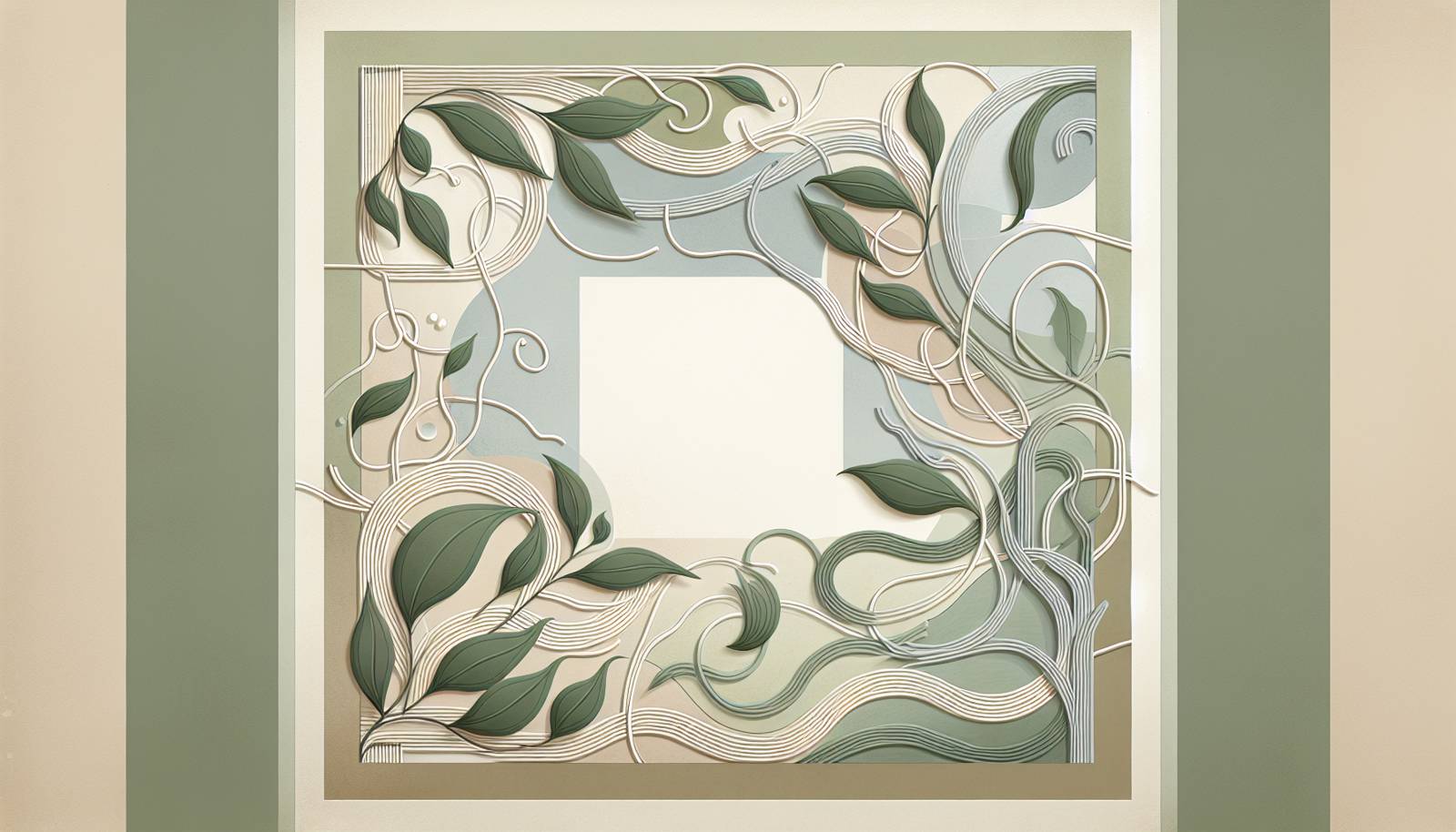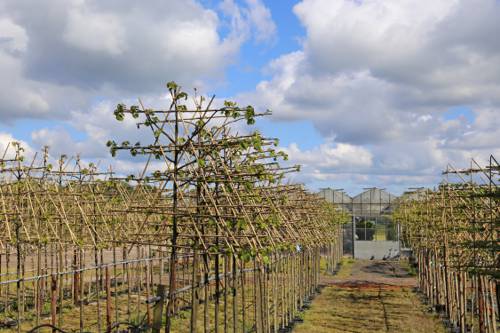
FAQ About Indoor Plant Espalier Techniques

What is espalier and how is it applied to indoor plants?
Espalier is a horticultural practice where plants are trained to grow against a flat surface in a particular pattern, usually creating a two-dimensional growth. This technique is not only decorative, but it also enables efficient use of space, making it ideal for indoor gardening. Indoor plant espalier involves choosing a suitable plant with flexible branches and training it along a framework or trellis.

Which indoor plants are suitable for espalier techniques?
Plants that are well-suited for espalier include those with flexible branches and strong growth patterns. Some popular choices for indoor espaliers are Ficus, Jasmine, certain types of Ivy, Hoya, and even specific varieties of climbing roses and fruit trees like citrus, which can thrive indoors with the proper care.

How do you start training an indoor plant for espalier?
To start training a plant for espalier, select a young plant that is healthy and vigorous. Install a trellis or wire framework against a wall where you want the plant to grow. Begin by gently securing the main branches to the support structure using soft ties or clips, guiding them to follow the desired pattern. Regularly prune unwanted growth to encourage the plant to focus energy on the designated branches.

What are the benefits of using espalier for indoor plants?
Espaliered plants can transform indoor spaces with their unique and decorative appearance, adding an element of living art. They make efficient use of space by growing vertically against walls, which is particularly useful in small living areas. Additionally, espalier can improve air circulation around the plant, reducing the risk of disease, and can even increase fruit yields in fruit-bearing varieties.

Are there any special tools required for espaliering plants indoors?
While espaliering doesn't require many specialized tools, it does require some basic equipment. You'll need a trellis or some form of support structure, soft plant ties or clips to secure the plant, and pruning tools such as shears to manage plant growth. These tools will help shape the plant and maintain its health.

Can you espalier all indoor plant types?
Not all indoor plants are suitable for espalier. Generally, plants that have naturally flexible branches and a tendency to vine or climb are more appropriate for espalier. While you can attempt espalier with a variety of plants, those that grow too stiffly or are naturally bushy without clear branching may prove challenging to train.

How often should you prune an espaliered indoor plant?
Pruning frequency depends on the plant species and its growth rate. For vigorous growers, regular monthly trimming may be necessary to maintain the shape and structure of the espalier. Slower-growing plants might only need pruning a few times a year. It's important to remove new growth that doesn't fit the desired pattern promptly to keep the structure neat and healthy.

What challenges might you face when espaliering indoor plants?
Challenges in espaliering indoor plants can include maintaining the plant's health in less-than-ideal light conditions, managing watering needs effectively, and preventing pests and diseases. Additionally, the initial training period can be labor-intensive, requiring patience and regular attention to guide the plant appropriately.

How does lighting affect indoor plant espalier installations?
Light is critical for the successful growth and training of espaliered plants. Ensure that the chosen location receives sufficient light; for many plants, bright indirect light is preferable. You may need to supplement natural light with artificial grow lights, especially if the plant does not receive adequate sunlight for parts of the day.

What are common patterns used in indoor espalier?
Common patterns for espalier include horizontal cordons, fan shapes, candelabra, and Belgian fences. Each pattern requires specific guidance of the plant's branches to create the desired effect. The choice of pattern often depends on the plant species, available space, and aesthetic preferences.

Is it possible to espalier flowering and fruiting plants indoors?
Yes, many flowering and fruiting plants can be espaliered indoors, provided they receive adequate light and care. Some popular choices include citrus trees, fig trees, and flowering jasmine. These plants not only add beauty with their foliage and structure but also with their blossoms and potentially, fruit.

How long does it take to fully train an espaliered indoor plant?
The time required to fully train an espaliered indoor plant can vary widely according to the plant species and desired pattern. In general, it can take several seasons to establish a mature form. Vigorous climbers might be trained more quickly, within a year or two, whereas slower-growing plants might take longer.

Can espalier be used to improve indoor air quality?
While the primary benefit of espalier is aesthetic and spatial, like all houseplants, espaliered plants contribute to improved air quality by absorbing carbon dioxide and releasing oxygen. Additionally, they can help filter out certain airborne toxins. Therefore, incorporating espalier techniques may enhance the natural air-purifying effects of indoor plants.

What kind of support structure is best for indoor espalier?
The best support structures for indoor espalier are those that are sturdy yet allow for flexibility. Wall-mounted trellises, wire grids, or wooden frames are commonly used. Ensure that the support is securely attached to withstand both the weight of the plant and the tension from training the branches along the structure.

How can you ensure the healthy growth of an espalier indoor plant?
To ensure healthy growth, provide the plant with optimal growing conditions, which include ample light, proper watering, and regular feeding with a balanced fertilizer. Maintaining humidity levels suitable for the plant species and monitoring for pests can prevent health issues. Consistent pruning and training will also keep the plant in good form.

Are there specific soil requirements for indoor espalier plants?
Most espaliered plants have similar soil requirements to their non-espaliered counterparts. Generally, a well-draining potting mix is crucial to prevent waterlogging, which could lead to root rot. Amend the soil with organic matter to enhance fertility and structure, ensuring robust growth.

How does espalier impact the growth rate of indoor plants?
Espalier does not necessarily impact the growth rate of indoor plants. However, it can influence growth direction and shape, meaning resources are redirected into creating the desired form. While the plant may not grow taller or thicker as quickly, it will develop in a more controlled and structured manner which supports the espalier design.

Is special watering needed for indoor espaliered plants?
Espaliered plants typically require the same watering protocol as their naturally growing forms. However, because they cover a wide surface area, it's crucial to ensure even watering. This may mean watering more frequently to accommodate increased surface evaporation or adjusting depending on the specific environment and plant type.

What seasonal considerations should be taken into account for indoor espalier?
Seasonal changes can impact light levels and temperatures, affecting indoor espaliered plants. During winter, you might need to increase artificial lighting or reposition plants closer to windows. Additionally, adjustments in watering and feeding should coincide with growth cycles, which often slow down during colder months.

Can you do espalier indoors without a wall mount?
Yes, it is possible to espalier indoors without using a wall mount. Freestanding trellises or custom frameworks anchored in a pot can serve as effective supports. These alternatives offer flexibility in placement, allowing for rearrangement if necessary, and can be particularly useful in rental homes or temporary settings.
